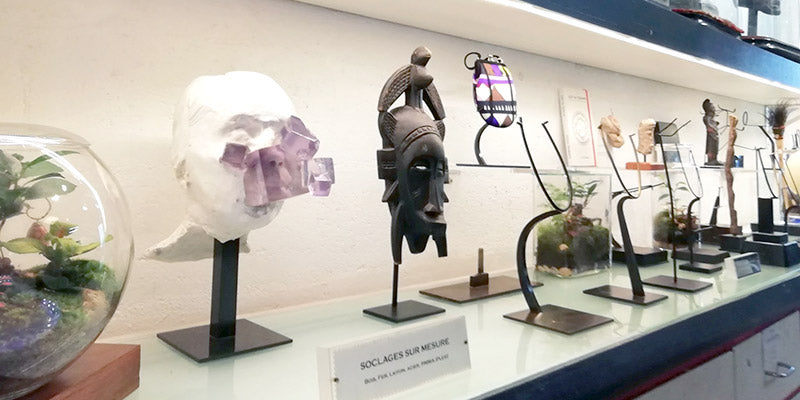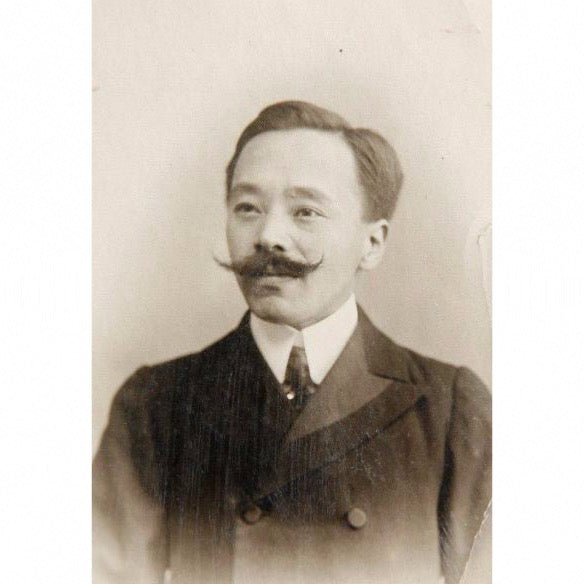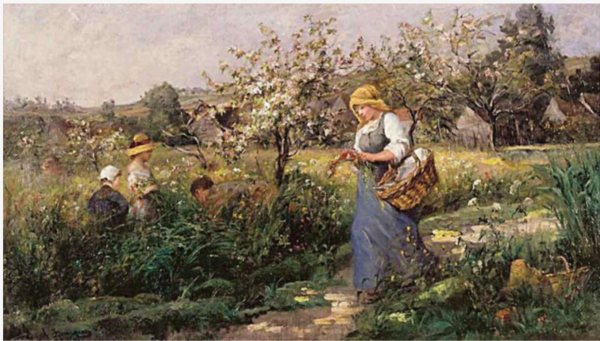
Impressionist art in the Val d'Oise: a journey to the heart of history
Val d'Oise, land of painters.
Certainly less well-known than Paris, Normandy or the South of France as an artistic territory, the Val d'Oise remains a department where 19th-century artists found material to develop their art.
Discover these places that have welcomed many artists and the most famous of the Impressionist artists: Vincent Van Gogh.
Discover these places that have welcomed many artists and the most famous of the Impressionist artists: Vincent Van Gogh.
An alternative to Barbizon
From the beginning of the 19th century, more and more artists felt the desire to leave their studios in order to capture the light, the wind in the trees, nature, water, the sky.
During these first years of exploration around 1810, it was the Barbizon region that caught the attention of these innovative artists.
While Gustave Courbet remained in his studio, some of his contemporaries had already taken to the train to capture the smallest details of nature as faithfully as possible. The depiction of trees seems to be the leitmotif that would lead these artists to gather together in the forest of Fontainebleau.
Trained by the painter Camille Corot from 1822.
Today, the term Barbizon School is widely questioned by art historians. Indeed, it is difficult to identify clear artistic similarities between all these artists. Their presence in these places is as much a result of the frank camaraderie between artists, reinforced by all the amenities offered by the region, added to this an easy access linked to the direct train from Paris . But history will still remember that at this time the world of art began a shift that it will never again question. The discovery of nature , of these movements of the impression that it arouses
During these first years of exploration around 1810, it was the Barbizon region that caught the attention of these innovative artists.
While Gustave Courbet remained in his studio, some of his contemporaries had already taken to the train to capture the smallest details of nature as faithfully as possible. The depiction of trees seems to be the leitmotif that would lead these artists to gather together in the forest of Fontainebleau.
Trained by the painter Camille Corot from 1822.
Today, the term Barbizon School is widely questioned by art historians. Indeed, it is difficult to identify clear artistic similarities between all these artists. Their presence in these places is as much a result of the frank camaraderie between artists, reinforced by all the amenities offered by the region, added to this an easy access linked to the direct train from Paris . But history will still remember that at this time the world of art began a shift that it will never again question. The discovery of nature , of these movements of the impression that it arouses
And then around 1840, Jules Dupré, a regular on excursions to Barbizon and whose reputation was well established, returned to paint in the Val d'Oise, where he was originally from. His family had always lived in Isle Adam. Jules Dupré returned to the region in search of vast, cloud-laden skies.
He brought Corot several times between L'Isle Adam and Auvers sur Oise.
The banks of this tributary of the Seine then offered painters a new playground.
He brought Corot several times between L'Isle Adam and Auvers sur Oise.
The banks of this tributary of the Seine then offered painters a new playground.
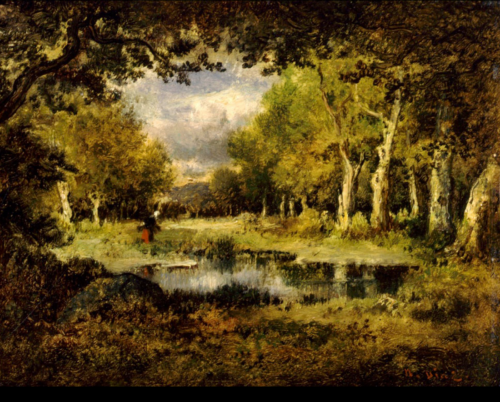
Narcissus of Pena
The Wood Collector
1866
www.histoiredelart.net
In the footsteps of painters
Traces of the passage of these artists can be found in a fairly wide area with the banks of the Oise as a common point.
Stroll between Auvers-sur-Oise, Isle-Adam, and even Argenteuil where Monet owned a house.
In Auvers-sur-Oise, the memory of Vincent Van Gogh 's last months is present on every street corner.
Stroll between Auvers-sur-Oise, Isle-Adam, and even Argenteuil where Monet owned a house.
In Auvers-sur-Oise, the memory of Vincent Van Gogh 's last months is present on every street corner.
"I feel so peaceful here."
Quote from Vincent Van Gogh , about his stay in Auvers-sur-Oise in a letter addressed to his brother Théo
The Val d'Oise impressionist territory.
Everyone is familiar with Van Gogh's famous painting of the church at Auvers-sur-Oise . But before him, many male and female painters painted the wheat fields of the Oise Valley, the riverside, and the inhabitants of this still-rural northern suburb of Paris.
The Val d'Oise saw the flourishing of artists throughout the 19th century.
Considering himself a diligent witness to the developments of Impressionism.
The Val d'Oise saw the flourishing of artists throughout the 19th century.
Considering himself a diligent witness to the developments of Impressionism.

Vincent Van Gogh
Church of Auvers-sur-Oise
1890
Orsay Museum
Léonides Bourges: the forgotten Impressionist painter
Léonide Bourges (1838-1909) moved to Auvers-sur-Oise in 1871 to join his artist friend Daubigny.
First, she is attracted to all subjects that can fuel her art.
Still life, genre scene portrait .
In order to be in line with the artistic discoveries of her time and on the advice of Camille Corot, she turned to landscape painting.
To do this, she learns and quickly becomes very gifted in this area.
Léonide Bourges handles the colors and nuances specific to landscape painting with great precision and harmony.
And it is with great originality that she creates very small format paintings representing views of Auvers-sur-Oise.
This collection of paintings is a true painted testimony of what Auvers-sur-Oise was like in the middle of the 19th century.
Today, Léonide Bourges is virtually forgotten in art history textbooks. Erased, as is often the case, by her male contemporaries.
But let yourself be carried away by this artist. You will certainly be seduced by the delicacy and gentleness of her art .
First, she is attracted to all subjects that can fuel her art.
Still life, genre scene portrait .
In order to be in line with the artistic discoveries of her time and on the advice of Camille Corot, she turned to landscape painting.
To do this, she learns and quickly becomes very gifted in this area.
Léonide Bourges handles the colors and nuances specific to landscape painting with great precision and harmony.
And it is with great originality that she creates very small format paintings representing views of Auvers-sur-Oise.
This collection of paintings is a true painted testimony of what Auvers-sur-Oise was like in the middle of the 19th century.
Today, Léonide Bourges is virtually forgotten in art history textbooks. Erased, as is often the case, by her male contemporaries.
But let yourself be carried away by this artist. You will certainly be seduced by the delicacy and gentleness of her art .
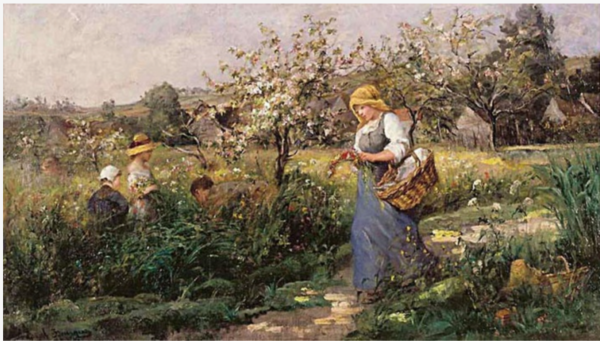
Leonide Bourges
Spring in Auvers
Daubigny Museum
Date ?
Charles François Daubigny: precursor of Impressionism
Like his contemporary Jules Dupré, Daubigny frequented the village of Barbizon very early on, where he developed a passion for landscape painting.
Daubigny rubbed shoulders with all the great artists of the time, including Gustave Courbet and Camille Corot, among others.
His interest in landscape painting was facilitated by the creation around the 1840s of tube paint .
This innovation allowed artists to free themselves from studios and paint outdoors.
Daubigny settled in Auvers-sur-Oise around the 1860s , from which point on he received and painted on his Boat-Workshop Le Botin.
This workshop in the middle of the water will allow Daubigny to revolutionize the art of aquatic landscaping, which he particularly likes.
The most famous of the Impressionists, Vincent Van Gogh, speaks of Daubigny in his correspondence with his brother.
The famous Dutch artist admired his artistic modernity.
Daubigny rubbed shoulders with all the great artists of the time, including Gustave Courbet and Camille Corot, among others.
His interest in landscape painting was facilitated by the creation around the 1840s of tube paint .
This innovation allowed artists to free themselves from studios and paint outdoors.
Daubigny settled in Auvers-sur-Oise around the 1860s , from which point on he received and painted on his Boat-Workshop Le Botin.
This workshop in the middle of the water will allow Daubigny to revolutionize the art of aquatic landscaping, which he particularly likes.
The most famous of the Impressionists, Vincent Van Gogh, speaks of Daubigny in his correspondence with his brother.
The famous Dutch artist admired his artistic modernity.
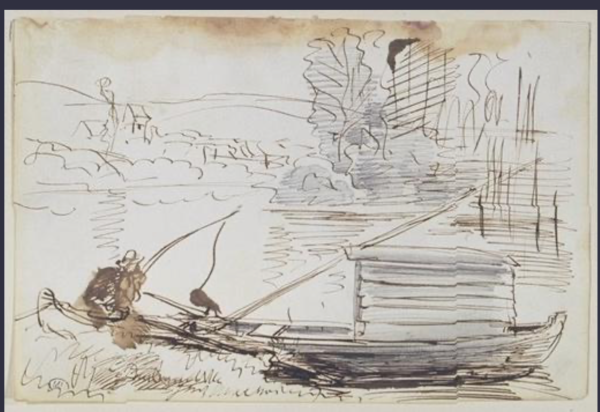
The Botin
Daubigny workshop boat
Sketch
All these artists are witnesses to a period of artistic excitement.
The artists come out of the studios , they want to represent nature in all its splendor and complexity.
Camille Corot, Daubigny, Léonide Bourges , and many others explored and paved the way for world-renowned artists such as Claude Monet and Vincent Van Gogh.
The artists come out of the studios , they want to represent nature in all its splendor and complexity.
Camille Corot, Daubigny, Léonide Bourges , and many others explored and paved the way for world-renowned artists such as Claude Monet and Vincent Van Gogh.
Impressionist walk in the heart of Val d'Oise
Claude Monet's Impressionist House
in Argentueil
Discover Claude Monet 's other house where he lived from 1871 to 1878.
Pissaro Museum
in Pontoise
This museum pays tribute to one of the pioneers of Impressionism.
Nestled in the heights of the old town of Pontoise.
Daubigny Museum in Auvers-sur-Oise
Discover this museum and especially the Botin, Daubigny's workshop boat.
In the footsteps of Vincent Van Gogh
in Auvers-sur-Oise
In Auvers-sur-Oise, dive into the heart of the last
Vincent Van Gogh's creative month and visit
- Dr. Gachet's House
- The Ravoux inn where the artist used to stay
- The castle of Auvers
- The Auvers cemetery where Vincent and Théo Van Gogh rest.
Tags:
Previous post
The Bubble and the Paris Saint-Ouen Flea Market
Next post


